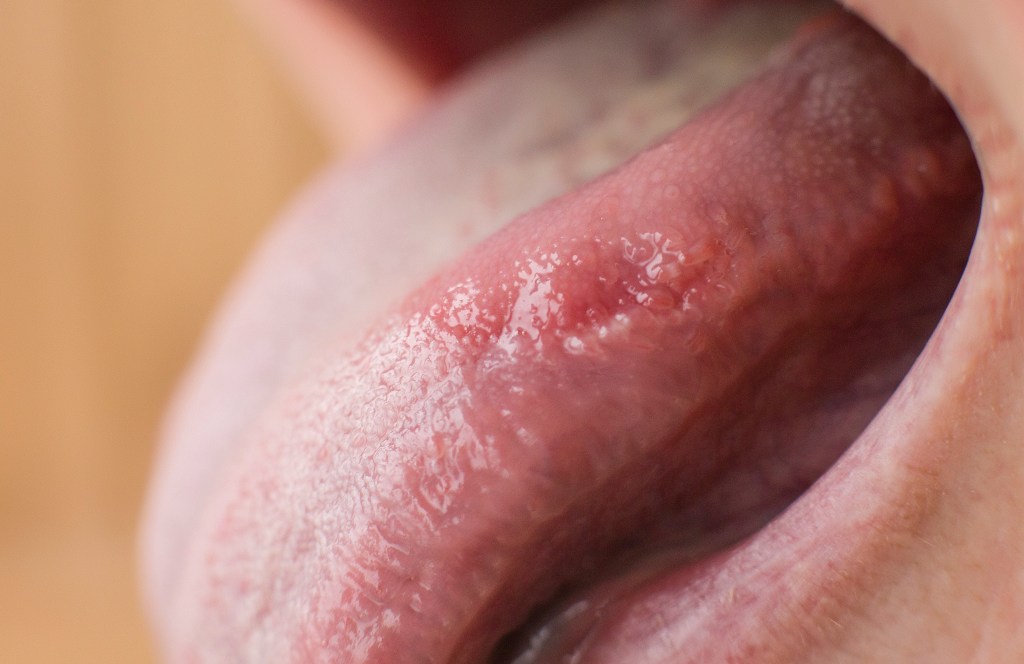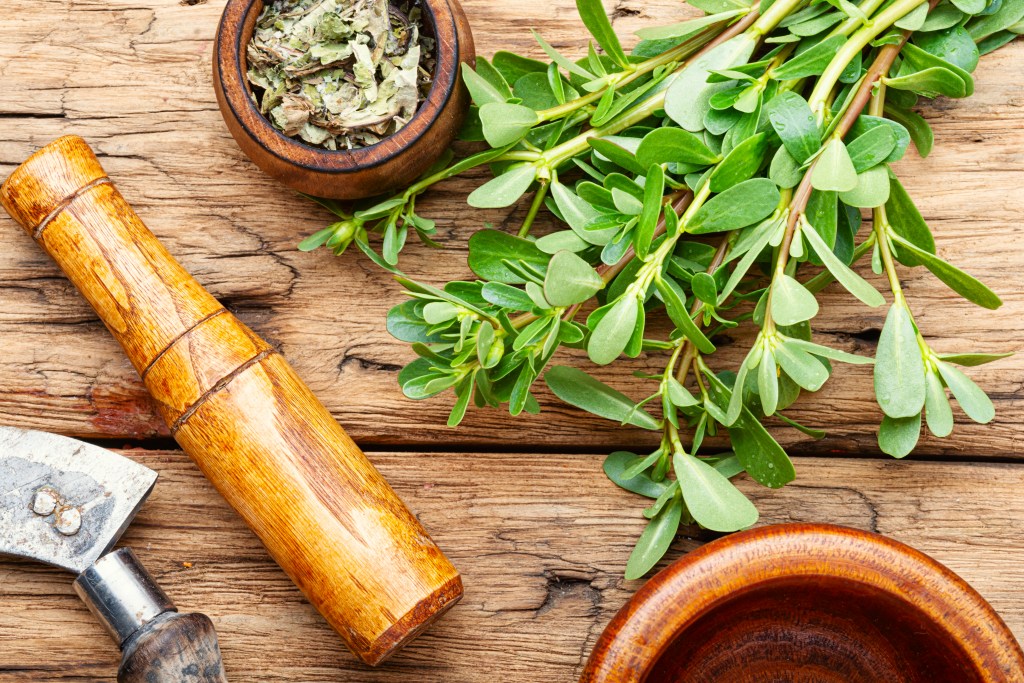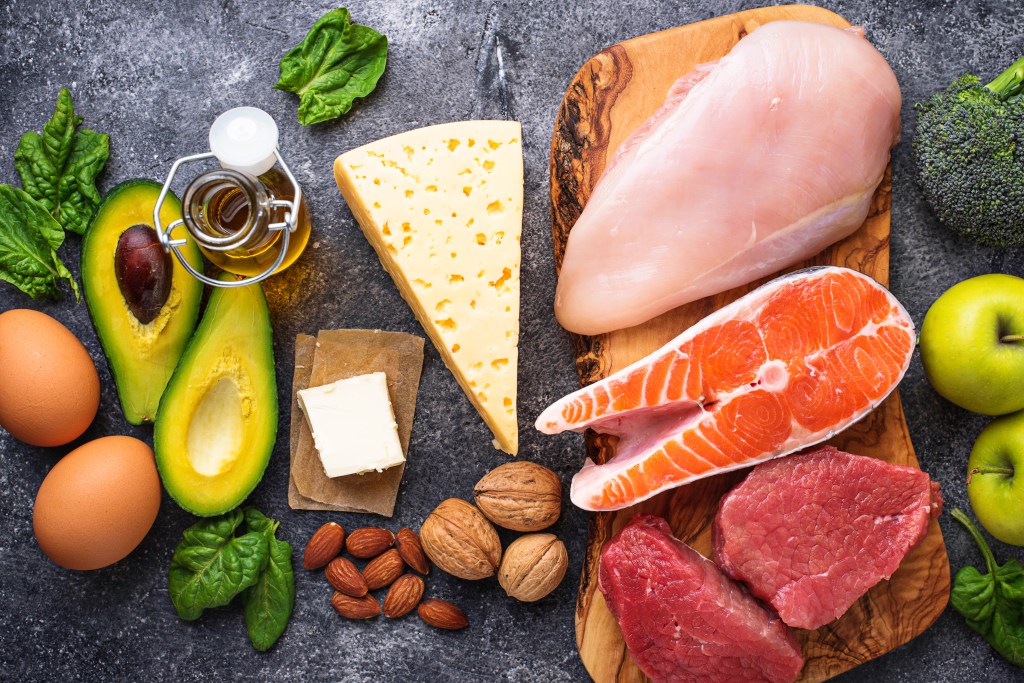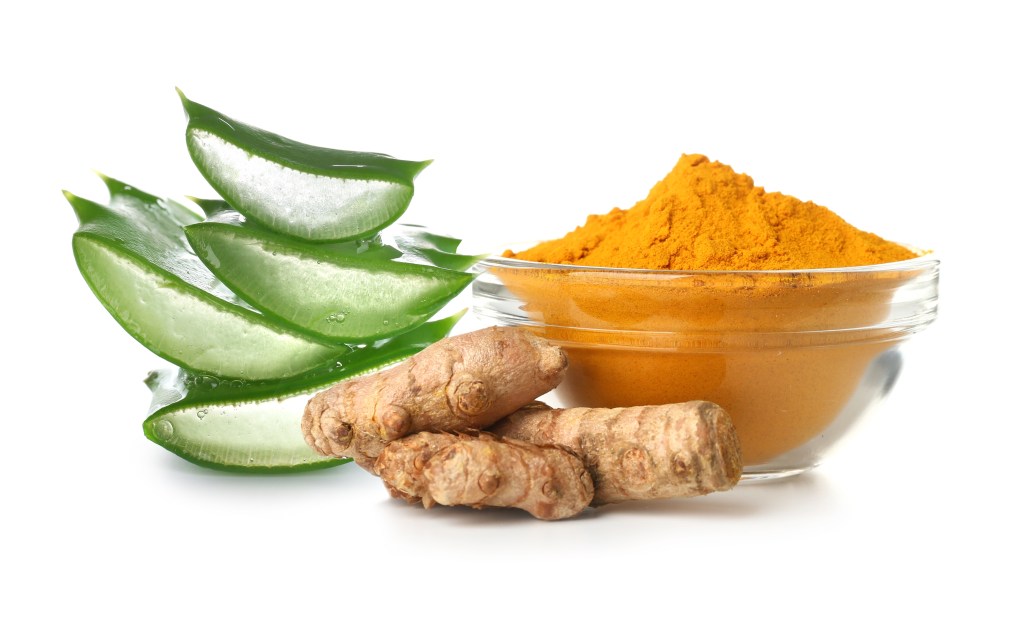At a glance
Oral lichen planus is a chronic inflammatory condition that affects the mouth, causing painful sores, white patches, and irritation. While there’s no cure, natural remedies such as purslane, turmeric, aloe vera, and baking soda can help manage symptoms. Lifestyle changes and good oral hygiene may also support immune balance and overall oral health.
Lichen planus is a frustrating and often painful inflammatory skin disease that can affect various body parts, but most commonly develops in the mouth.
While the exact cause of oral lichen planus remains unclear, several natural remedies can help manage common symptoms.
Let’s take a closer look at how lichen planus affects the body and explore natural oral lichen planus home remedies.
What is oral lichen planus?
Lichen planus refers to a group of chronic inflammatory conditions that affects around two percent of the general population.
While this skin disease can be asymptomatic, it often impacts the skin both externally and internally, resulting in various types of lesions.
Symptomatic oral lichen planus is the most common type, primarily affecting the oral mucous membranes.
It’s characterized by white or red patches, open sores, and swollen tissues, which can cause a burning sensation or general pain, especially when eating or during dental hygiene routines.
In addition, there are several other variants of this inflammatory condition:
- Cutaneous lichen planus is characterized by red skin bumps or purplish-colored lesions, often with thin white lines known as Wickham’s striae.
- Nail lichen planus typically affects fingernails or toes and often manifests as longitudinal ridges, pitting, splitting, and discoloration.
- Atrophic lichen planus is a rare variant that can develop on skin previously affected by lichen planus lesions, appearing as white-bluish or brown plaques or macules, which resemble flat, discolored spots.?
- Erosive lichen planus is also known as ulcerative lichen planus and primarily affects the mucous membranes of the mouth or genital area. This form of lichen planus may result in significant discomfort as it causes painful ulcers.?
- Lichen planopilaris impacts the scalp and is characterized by inflammation around the hair follicles that can result in hair loss and scalp scarring. ?
Watch this video to discover the best home remedy for lichen planus.
What causes oral lichen planus?
According to research published in Frontiers in Medicine, lichen planus occurs when immune cells responsible for detecting and responding to foreign invaders mistakenly target the body’s own skin and mucosal cells.
This misdirected and imbalanced immune response can trigger inflammation and subsequently lichen planus symptoms.
While the exact origin of lichen planus remains to be determined, it’s believed that a combination of factors contributes to the development of these autoimmune responses.
Psychological stress appears to be a common factor, possibly due to the detrimental impact of stress on the immune system, which can trigger the onset of oral lichen planus flare-ups.
According to a study published in Oral Surgery, Oral Medicine, Oral Pathology, and Oral Radiology, certain medications, such as non-steroidal anti-inflammatory drugs (NSAIDs), have also been linked to the development or worsening of oral lichen planus.
In addition, research published in the Journal of Clinical and Experimental Dentistry highlights a common association between hepatitis C infections and the occurrence of oral lichen planus.
Other causal factors, such as exposure to contact allergens, elevated cholesterol, hypertension, infections, and a genetic predisposition to cancer, have been linked with an increased risk of lichen planus.

Signs and symptoms
Oral lichen planus can present with several symptoms that can vary in severity from person to person.
Common oral lichen planus symptoms include:
- Lacy white, web-like patterns inside the cheeks
- Sore red patches on the tongue
- Painful sores and ulcers
- Thick, rough patches inside the mouth
How is oral lichen planus diagnosed?
Healthcare providers utilize a combination of clinical evaluations, patient history, biopsies, allergy testing, and blood tests to help diagnose lichen planus.
If you suspect you may be affected by lichen planus, it’s crucial to seek medical care for a thorough evaluation of your health status.

Conventional lichen planus treatments
As there currently is no cure for oral lichen planus, conventional treatment focuses on symptom relief and minimizing inflammation.
Topical steroids and ointments, such as corticosteroids, are often prescribed to control inflammation in the affected areas. While they are effective for treating oral lichen planus, they increase the risk of oral candidiasis and mucosal thinning.
The use of immunosuppressants aims to suppress immune responses that can contribute to symptoms of oral lichen planus. However, side effects can include a heightened risk of infections and an increased risk of cancer, especially with prolonged use.
Ultraviolet irradiation (PUVA therapy) is a type of photochemotherapy that involves exposure to a specific wave of ultraviolet light. This therapy is typically used for more severe or widespread cases of lichen planus, aiming to reduce inflammation and slow an overactive immune system.

Oral lichen planus home remedies
Dealing with oral lichen planus can be challenging. Fortunately, there are several natural home remedies that can help alleviate symptoms and support your immune system.
Here are some of the best natural remedies to combat oral lichen planus at home.
1. Purslane
One of the best remedies for lichen planus is the nutrient-dense herb purslane.
Purslane is rich in antioxidants, omega-3 fatty acids, vitamins A and C, folate, and minerals such as calcium, potassium, and magnesium, all of which are critical in maintaining optimal health.
In addition, purslane has impressive immune-modulating properties, which may be particularly beneficial for managing oral lichen planus.
Evidence published in the Journal of Pharmacopuncture highlights that purslane is a rich source of various polyphenols and flavonoids, which have been found to support balanced immune cell activation and activity.
The authors summarize, “Studies suggest that purslane may exert its effects through anti-inflammatory properties and balancing the adaptive and innate immune system.”
There are many ways to use purslane at home. The leaves, stems, and flowers of purslane can be consumed on their own or added to a wide variety of recipes. Alternatively, you can apply purslane topically as a soothing soap or salve.

2. Other natural remedies
Although purslane is generally well-tolerated, some individuals can be sensitive or allergic to this herb. Luckily, several other natural remedies can help manage lichen planus.
Coconut oil is a natural antimicrobial, and applying coconut oil to the affected areas can help eliminate potentially harmful bacteria that may trigger skin irritation and inflammation.
Turmeric is well known for its anti-inflammatory properties and can be applied as an ointment or used to season a wide variety of dishes to help manage lichen planus symptoms.
Baking soda rinses can help neutralize acids in the mouth, soothe inflammation, and support the healing of lesions linked to oral lichen planus
Aloe vera is a great option for reducing pain and inflammation, as it can be applied directly to the affected area or used as an aloe vera mouthwash.
“While these remedies are considered safe, there is always the possibility of allergic reactions or negative interactions with prescription medications,” explains Dr. Berg. “It’s best to consult a healthcare professional before incorporating natural remedies into your routine to minimize the risk of side effects.”
3. Incorporate effective stress reduction
According to research published in Current Opinion in Psychology, a clear connection exists between psychological stress and dysregulated immune function.
Some of the best ways to manage stress and support a balanced immune system include:
- Prioritize good quality sleep
- Stay physically active
- Maintain optimal vitamin D levels
- Consume plenty of magnesium-rich foods
- Practice deep breathing
- Stay hydrated and maintain electrolyte balance
- Limit caffeine intake
- Avoid alcohol

4. Follow a Healthy Keto® diet
The nutrients you provide to your body play an important role in its ability to heal and regenerate efficiently.
Following a nutritious low-carb diet such as Healthy Keto®, focused on nutrient-dense organic foods rich in healthy fats, high-quality proteins, and non-starchy vegetables, is an excellent strategy to ensure that your body gets the nutrients it needs to maintain optimal health.
Research published in Nature Medicine confirms the benefits of a low-carb diet for supporting immune system balance, reporting that after just two weeks, participants following a ketogenic diet noticed positive improvements in immune functions.
5. Practice good oral hygiene
Practicing good oral hygiene to keep mucous membranes healthy is crucial for managing oral lichen planus and preventing a worsening of symptoms.
This includes regular brushing, ideally with a soft-bristled toothbrush, and using mild, alcohol-free mouthwash to reduce irritation and prevent secondary infections.
6. Avoid irritants
Certain irritants, such as tobacco, alcohol, spicy foods, and acidic drinks, may irritate and exacerbate lichen planus lesions, and it’s best to avoid these whenever possible.
Key takeaways
- Oral lichen planus is a chronic inflammatory condition causing lesions, pain, and irritation in the mouth.
- Purslane, a nutrient-dense herb with anti-inflammatory and immune-supporting properties, is considered one of the best home remedies.
- Other remedies include turmeric, aloe vera, coconut oil, and baking soda, which may help soothe symptoms.
- Reducing stress, following a nutrient-dense Healthy Keto diet, and practicing good oral hygiene can further support immune function and reduce flare-ups.
FAQ
1. What is the best oral lichen planus home remedy?
Purslane is considered one of the best home remedies for oral lichen planus. This nutrient-dense herb is a rich source of antioxidants, which help combat inflammation, and contains several beneficial vitamins and minerals necessary to support strong immune defenses.
2. What aggravates oral lichen planus?
Irritants such as tobacco, alcohol, spicy foods, and acidic beverages can exacerbate oral lichen planus symptoms.
3. Is baking soda good for oral lichen planus?
Yes, a baking soda rinse can be an effective natural remedy for managing oral lichen planus symptoms as it helps neutralize acids in the mouth and soothe inflammation.
4. How do you stop lichen planus from spreading in your mouth?
By maintaining proper oral hygiene practices and avoiding harsh irritants, lesion progression can be reduced, which helps prevent oral lichen planus from spreading to other areas of the mouth.
5. Can oral lichen planus be cured?
While there is currently no definitive treatment for oral lichen planus, several remedies are available, including preventive care, topical treatments, and lifestyle changes.
In addition, purslane, a leafy green weed species, has been found effective in managing oral lichen planus symptoms.
6. What is the best way to use purslane for oral lichen planus?
The most effective way to use purslane at home is to consume it through food. Purslane can be enjoyed raw in salads, added to smoothies and shakes, or incorporated into stews and soups.
Additionally, purslane can be applied topically as a soothing paste or ointment directly to affected areas in the mouth to help reduce inflammation and discomfort.
7. Can I eat purslane from my yard?
You can consume purslane from your yard if you don’t use weed killers, insecticides, or other harmful chemicals.
Exercise great caution when foraging for herbs. Many plants can be toxic, and if you are uncertain about a plant’s identity, don’t consume it and seek guidance from a knowledgeable professional.
8. Who shouldn’t eat purslane?
While purslane side effects are uncommon, it can trigger allergic reactions in some individuals. In addition, individuals with kidney disorders and those taking blood-thinning medications are at an increased risk of side effects and should consult a healthcare provider before consuming purslane.
9. Can dietary changes affect lichen planus?
Diets high in fried and processed foods and those high in sugar and carbohydrates can cause nutrient deficiencies, impair the immune system, and potentially worsen lichen planus symptoms.
Opting for a diet focused on nutrient-dense, organic, whole foods rich in anti-inflammatory fats, such as Healthy Keto®, is an excellent strategy to support the body’s immune system and promote a healthy body.
Sources
- https://www.ncbi.nlm.nih.gov/pmc/articles/PMC8591129/
- https://pubmed.ncbi.nlm.nih.gov/3478637/
- https://www.ncbi.nlm.nih.gov/pmc/articles/PMC6203921/
- https://www.ncbi.nlm.nih.gov/pmc/articles/PMC6461301/
- https://www.ncbi.nlm.nih.gov/pmc/articles/PMC4465119/
- https://www.nature.com/articles/s41591-023-02761-2













